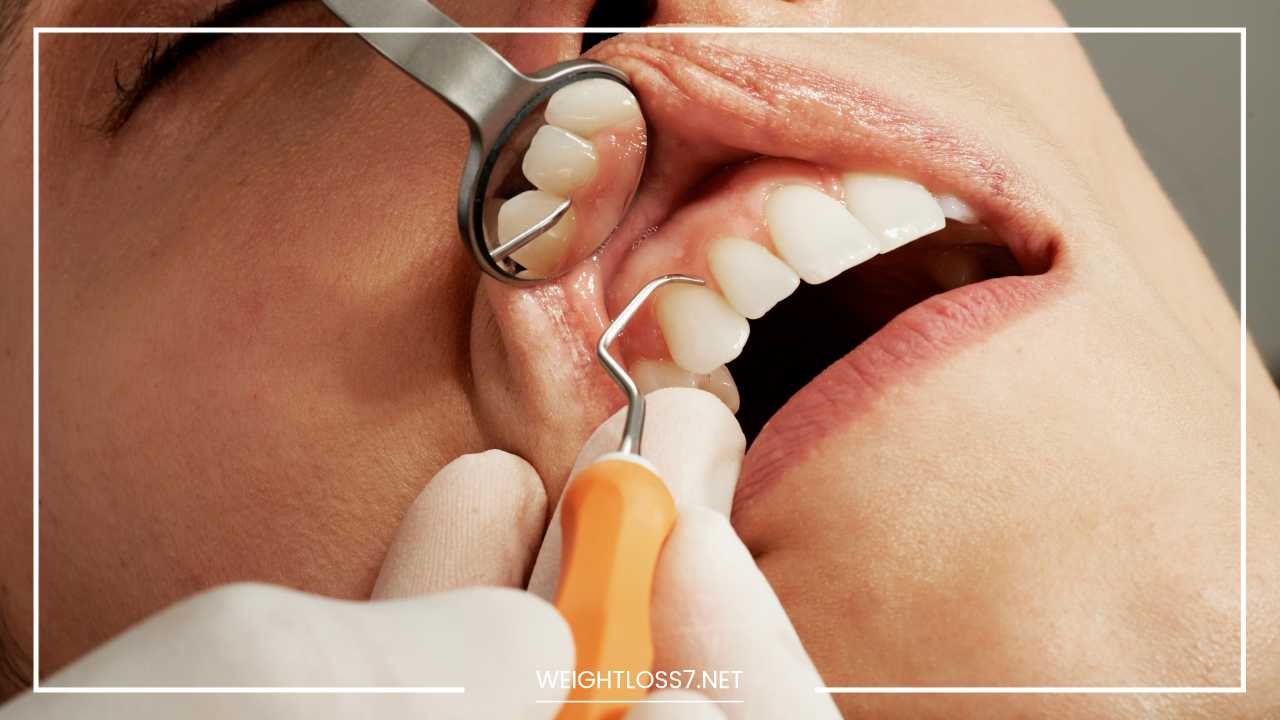Dental Treatments Explained: From Cleanings to Implants

Dental Treatments
Shining a Light on Dental Treatments: A Guide to a Healthy Smile
Our smiles are powerful tools. They can light up a room, convey confidence, and make a lasting impression. But a healthy smile doesn’t just happen – it takes consistent care and, sometimes, dental treatment.
The world of dentistry can seem overwhelming, filled with unfamiliar terms and procedures. This blog post aims to be your one-stop guide, shedding light on common dental treatments, from routine cleanings to more complex procedures.
Whether you’re due for your next checkup or considering a smile makeover, this information will empower you to make informed decisions about your oral health.
The Essentials: Cleanings, Checkups, and Prevention
Let’s start with the foundation of good oral health: preventive care. Regular dental cleanings and checkups, typically recommended every six months, are crucial for maintaining a healthy smile.
During a cleaning, a dental hygienist will remove plaque and tartar buildup, which can harbor bacteria and lead to cavities and gum disease.
Your dentist will then perform a thorough examination, checking for cavities, gum health, and any other potential issues.
Early detection is key, as catching problems early often translates to less invasive and expensive treatment down the line.
Here’s a breakdown of some essential preventive measures:
- Brushing: Twice a day for two minutes with a fluoride toothpaste is a non-negotiable.
- Flossing: Daily flossing removes plaque and debris from between teeth, where brushing can’t reach.
- Diet: Limiting sugary drinks and foods helps prevent cavities.
- Fluoride: Fluoride strengthens tooth enamel and fights cavities. Talk to your dentist about fluoride supplements if needed.
Addressing Common Dental Issues: Fillings, Crowns, and Extractions
Sometimes, despite our best efforts, cavities or other dental problems arise. Here are some common treatments dentists use to address them:
- Fillings: Used to treat cavities, fillings restore the tooth structure and prevent further decay. Modern fillings come in various materials, each with its advantages. Discuss the best option for you with your dentist.
- Crowns: A crown is a tooth-shaped cap that covers a damaged or weakened tooth. Crowns restore strength, function, and aesthetics. They are often used after root canals or large fillings.
- Extractions: In some cases, a tooth may be too damaged or diseased to save. Extractions are performed to prevent further problems and preserve oral health.
Restorative Dentistry: Regaining Your Smile
Dental treatments extend beyond addressing immediate issues. Restorative dentistry focuses on restoring function and aesthetics to your smile. Here are some procedures that fall under this umbrella:
- Dental Implants: Implants are artificial tooth roots surgically placed in the jawbone. They provide a strong foundation for crowns, bridges, or dentures, restoring both function and appearance.
- Bridges: Bridges are fixed dental restorations that replace missing teeth by anchoring to adjacent healthy teeth.
- Dentures: Dentures are removable replacements for missing teeth. They can be full dentures for a complete arch of teeth or partial dentures for a few missing teeth.
Boosting Your Confidence: Cosmetic Dentistry
A beautiful smile can significantly boost your confidence and self-esteem. Cosmetic dentistry offers a variety of treatments to enhance your smile’s aesthetics. Here are a few popular options:
- Teeth Whitening: Professional teeth whitening treatments can remove deep stains and discoloration for a brighter, whiter smile. Options include in-office treatments and at-home whitening kits.
- Veneers: Thin shells of porcelain or composite resin bonded to the front surface of teeth, veneers can address chips, cracks, discoloration, or misalignment for a flawless smile.
- Dental Bonding: A tooth-colored resin is used to repair minor chips, cracks, or gaps between teeth for a more even and aesthetically pleasing smile.
Finding the Right Treatment for You
With so many dental treatments available, how do you decide which one is right for you? Here are some key factors to consider:
- The nature of your dental issue: Discuss your specific concerns and goals with your dentist. They will assess your oral health and recommend the most appropriate treatment.
- Your budget and insurance coverage: Dental treatments vary in cost. Understanding your insurance coverage and discussing payment options with your dentist is crucial.
- Your desired outcome: Do you prioritize functionality, aesthetics, or both?
Making Dental Treatment a Positive Experience
Dental anxiety is quite common. However, with the advancements in modern dentistry and a focus on patient comfort, there’s no reason to dread dental treatment. Here are some tips to ensure a positive experience:
- Communicate openly with your dentist: Discuss any anxieties you have and ask questions freely.
- Ask about sedation options: Nitrous oxide (laughing gas) or oral sedation can help alleviate anxiety during procedures.
Technology in Dentistry: A Look at the Future
Dentistry is constantly evolving, with new technologies emerging to improve treatment options, accuracy, and patient comfort. Here are some exciting advancements taking the dental world by storm:
- Digital X-rays: Gone are the days of bulky X-ray machines. Digital X-rays provide a clearer picture of your teeth and jawbone with less radiation exposure.
- 3D Printing: 3D printing technology is revolutionizing dentistry. It allows dentists to create custom crowns, bridges, and surgical guides with incredible precision and efficiency.
- Computer-Aided Design/Computer-Aided Manufacturing (CAD/CAM): CAD/CAM technology streamlines the process of creating dental restorations. Dentists can design crowns, inlays, and onlays on a computer and have them milled directly from a ceramic block in the office, significantly reducing waiting times.
- Laser Dentistry: Lasers can be used for various procedures, including soft tissue removal during gum surgery, treating tooth sensitivity, and even cavity detection.
Maintaining a Healthy Smile for Life
Taking care of your smile is an ongoing commitment. Here are some tips to ensure your oral health thrives for years to come:
- Practice good oral hygiene: Brushing twice a day, flossing daily, and using mouthwash can significantly reduce plaque buildup and prevent gum disease.
- Maintain a healthy diet: Limit sugary foods and drinks that can contribute to cavities. Opt for a balanced diet rich in fruits, vegetables, and calcium for strong teeth and bones.
- Schedule regular dental checkups and cleanings: Don’t wait until you have a problem to see your dentist. Regular appointments allow for early detection and treatment of any potential issues.
- Don’t ignore potential problems: If you experience any pain, sensitivity, or changes in your mouth, schedule a dental appointment promptly. Early intervention can prevent small issues from becoming major problems.
- Consider a nightguard: If you grind your teeth at night, a nightguard can protect your teeth from wear and tear.
Final Word
A healthy smile is not just about aesthetics; it’s about your overall well-being. By understanding the various dental treatments available and prioritizing preventive care, you can empower yourself to maintain a healthy smile throughout your life.
With advancements in technology constantly improving the dental experience, there’s no better time to invest in your oral health and achieve the confident, radiant smile you deserve.
Frequently Asked Questions (FAQ) about Dental Treatments
We understand that navigating the world of dentistry can raise questions. Here, we answer some frequently asked questions to empower you further:
Q: How painful are dental procedures?
A: Modern dentistry prioritizes patient comfort. Many procedures are performed with local anesthesia to numb the area being treated. Additionally, dentists offer sedation options like nitrous oxide (laughing gas) or oral sedation for patients with anxiety.
Q: How much do dental treatments cost?
A: The cost of dental treatment varies depending on the specific procedure, materials used, and your dentist’s location.
Some procedures may be partially or fully covered by dental insurance. Discussing treatment options and associated costs with your dentist is crucial for budgeting.
Q: What are some alternatives to traditional braces?
A: Clear aligner therapy, such as Invisalign, has become a popular alternative to traditional metal braces. These aligner trays are nearly invisible and gradually shift your teeth into position. Discuss your candidacy for clear aligners with your dentist.
Q: Is teeth whitening safe?
A: Professional teeth whitening treatments performed by a dentist are generally safe. However, some people may experience temporary tooth sensitivity.
It’s important to discuss your teeth whitening goals and any concerns with your dentist to determine the best approach for you.
Q: How can I improve my smile without dental procedures?
A: There are ways to enhance your smile without undergoing dental procedures. Here are a few tips:
- Practice good oral hygiene: Maintaining a clean and healthy smile naturally enhances its appearance.
- Whiten your teeth at home: Over-the-counter whitening products like toothpaste and strips can offer some degree of whitening. However, results may be less dramatic than professional treatments.
- Use lip gloss: A sheer lip gloss can create the illusion of fuller, brighter lips, drawing attention away from any minor imperfections in your smile.
Q: What if I have dental phobia?
A: Dental phobia is a common concern. Many dentists offer techniques to help manage anxiety during appointments.
Communicate your anxieties openly with your dentist. They may be able to provide relaxation techniques or sedation options to make your experience more comfortable.
Remember: This FAQ section is not exhaustive. If you have any further questions or concerns, don’t hesitate to consult your dentist. They are the best resource to guide you on your journey towards optimal oral health.

















